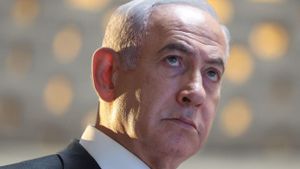Unidentified drones have recently been spotted hovering over several U.S. military bases located throughout the United Kingdom, prompting both concern and action from military and defense officials. These occurrences, confirmed by various sources, have escalated fears of possible espionage or security breaches at key military installations as tensions around global military operations continue to rise.
The series of drone sightings kicked off around November 20, 2024, targeting bases such as RAF Lakenheath, RAF Mildenhall, RAF Fairford, and RAF Feltwell. These installations are significant as they house American fighter jets and play strategic roles in U.S. military operations across Europe. Given their importance, the sighting of these drones is not being taken lightly.
According to reports from Caliber.Az and other news outlets, the drones appear to be part of coordinated flights, raising the likelihood they are not merely the casual hobbyist's devices but potentially the work of organized groups. A spokesperson for the U.S. Air Forces Europe indicated, "small unmanned aerial systems continue to be spotted... since November 20, and they have yet to impact base residents or U.S. assets."
British authorities, alarmed by the developments, have deployed approximately 60 British soldiers to assist with security efforts at these bases. These troops are tasked with operating advanced counter-drone systems aimed at detecting, tracking, and neutralizing any potential drone intrusions. Defense Minister Maria Eagle reassured the public, stating, "The protection of our personnel and bases is, of course, our highest priority." She emphasized the serious nature of these incursions and the legal ramifications for those caught operating drones unlawfully over military installations.
The increase of drone sightings over these U.S. bases has evoked speculation about their origins and intentions. A senior U.S. official noted, "The drones do not appear to be the work of hobbyists," highlighting concerns over the possible involvement of state actors or malign organizations. The sophistication of the drones, described as small quadcopters and octocopters, suggests they are more advanced than typical consumer-grade models, leading to theories about espionage or planned military operations.
Mark Cancian, a former Pentagon official, explained the challenges associated with determining the intent behind such activities, noting, "Hostile intent would likely focus on the most sensitive areas of the bases, but many amateurs may want to snoop there as well." This ambiguity complicates the response actions and strategies for safeguarding the bases.
While it is uncertain whether the drones pose exact threats, their proximity to RAF Fairford and other notable military structures becomes particularly concerning. Military analysts are investigating the possible connection between the drone sightings and rising geopolitical tensions, especially following increased military actions surrounding Ukraine and Russia.
Just weeks prior to these events, Ukraine had successfully targeted Russian assets using U.S. and British-supplied intermediate-range missiles, which had stirred responses from Moscow. President Vladimir Putin’s government issued statements claiming the right to retaliate against nations facilitating operations targeting Russia. Consequently, this raises eyebrows over whether these drone sightings are linked to these broader military contexts, with experts pondering if they are reflections of rising global tension.
Recent drone activities aren't unique to the UK. Just last year, large surveillance drones were spotted hovering near Langley Air Force Base for nearly three weeks, highlighting the growing trend of unauthorized drone operations near U.S. military sites. The potential risks surrounding these airspaces have prompted renewed discussions about the safety measures and technologies needed to address drone misconduct.
Back to the current drone incursion situation, the UK's Ministry of Defence has stated they are working closely with U.S. forces to investigate the nature of these drones thoroughly, seeking to ascertain if they represent threats on the security front or if they stem from mischievous amateur enthusiasts.
This heightened vigilance by both the U.S. and the UK is not just about monitoring the skies; it's also about preemptively addressing aerial threats before they can manifest. The defense ministries from both countries have promised continued vigilance as investigations progress, searching for conclusive evidence tied to these drones and their operators.
The potential legal consequences for drone operators can be severe, with offenders risking up to 14 years of imprisonment under the UK's national security laws if they are found guilty of deliberately violating military airspace regulations. This threat of legal action underlines the seriousness with which officials are taking these sightings.
So far, the joint investigation continues as authorities seek to piece together the details behind these drone sightings and their possible connection to larger threats against national security. The prevalence of drone technology means military agencies must be prepared to adjust their operational protocols rapidly to adapt to this sudden shift.
Dating back to the 9/11 attacks, national defense strategies have consistently evolved, especially with innovations like drone technologies complicate traditional security paradigms. This incident serves as another reminder of the increasing complexity of maintaining military security in the face of advancements in unmanned aircraft technologies.
Reports from reconnaissance missions and other detected actions may soon offer clarity on whether the drones represent acts of aggression or if they pose no real threat at all.
Experts will be keeping their eyes firmly trained on developments, especially as incidents like this continue to occur. For both the American and British Air Forces, this can be both as cautionary tale and call to action, urging new defensive strategies to address the modern aerial threats they face.
For now, vigilance and adaptability remain key words for both countries as they confront the new normal of aerial incursions targeting their military assets, marking another chapter on the shifting vistas of modern warfare.



